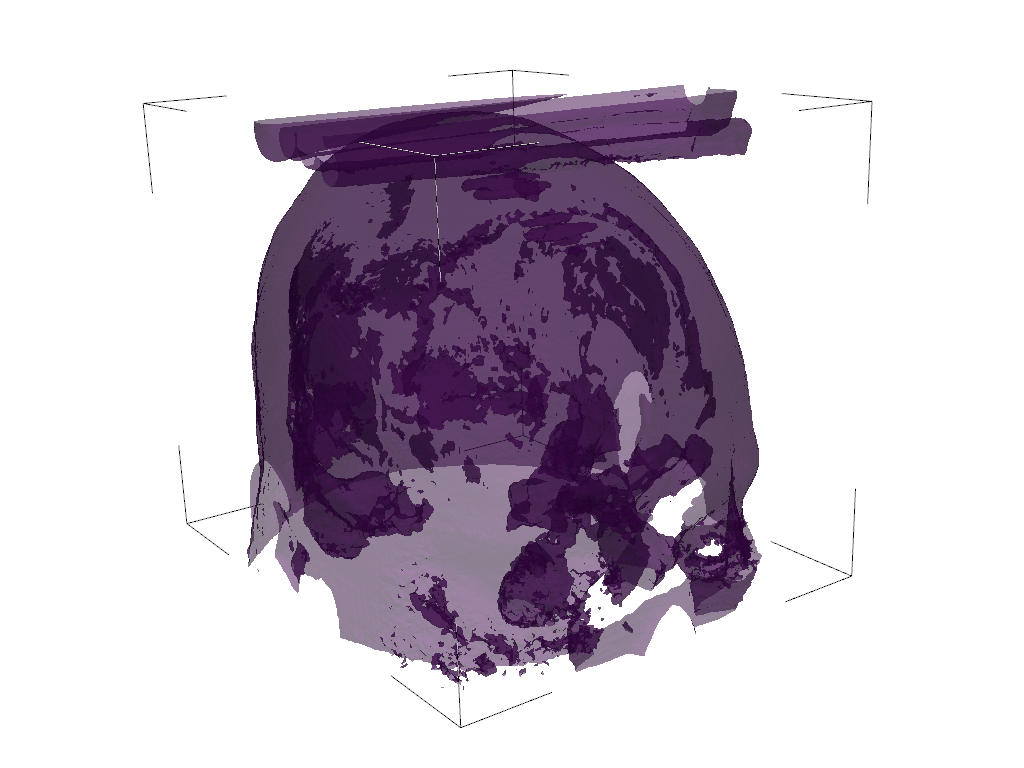Note
Go to the end to download the full example code.
Moving Isovalue#
Make an animation of an isovalue through a volumetric dataset
from __future__ import annotations
import numpy as np
import pyvista as pv
from pyvista import examples
vol = examples.download_brain()
vol
Now lets make an array of all of the isovalues for which we want to show.
values = np.linspace(5, 150, num=25)
Now let’s create an initial isosurface that we can plot and move
surface = vol.contour(values[:1])
Precompute the surfaces
Set a single surface as the one being plotted that can be overwritten
surface = surfaces[0].copy()
filename = 'isovalue.gif'
plotter = pv.Plotter(off_screen=True)
# Open a movie file
plotter.open_gif(filename)
# Add initial mesh
plotter.add_mesh(
surface,
opacity=0.5,
clim=vol.get_data_range(),
show_scalar_bar=False,
)
# Add outline for reference
plotter.add_mesh(vol.outline_corners(), color='k')
print('Orient the view, then press "q" to close window and produce movie')
plotter.camera_position = [
(392.9783280407326, 556.4341372317185, 235.51220650196404),
(88.69563012828344, 119.06774369173661, 72.61750326143748),
(-0.19275936948097383, -0.2218876327549124, 0.9558293278131397),
]
# initial render and do NOT close
plotter.show(auto_close=False)
# Run through each frame
for surf in surfaces:
surface.copy_from(surf)
plotter.write_frame() # Write this frame
# Run through backwards
for surf in surfaces[::-1]:
surface.copy_from(surf)
plotter.write_frame() # Write this frame
# Be sure to close the plotter when finished
plotter.close()

Orient the view, then press "q" to close window and produce movie
Total running time of the script: (0 minutes 26.027 seconds)